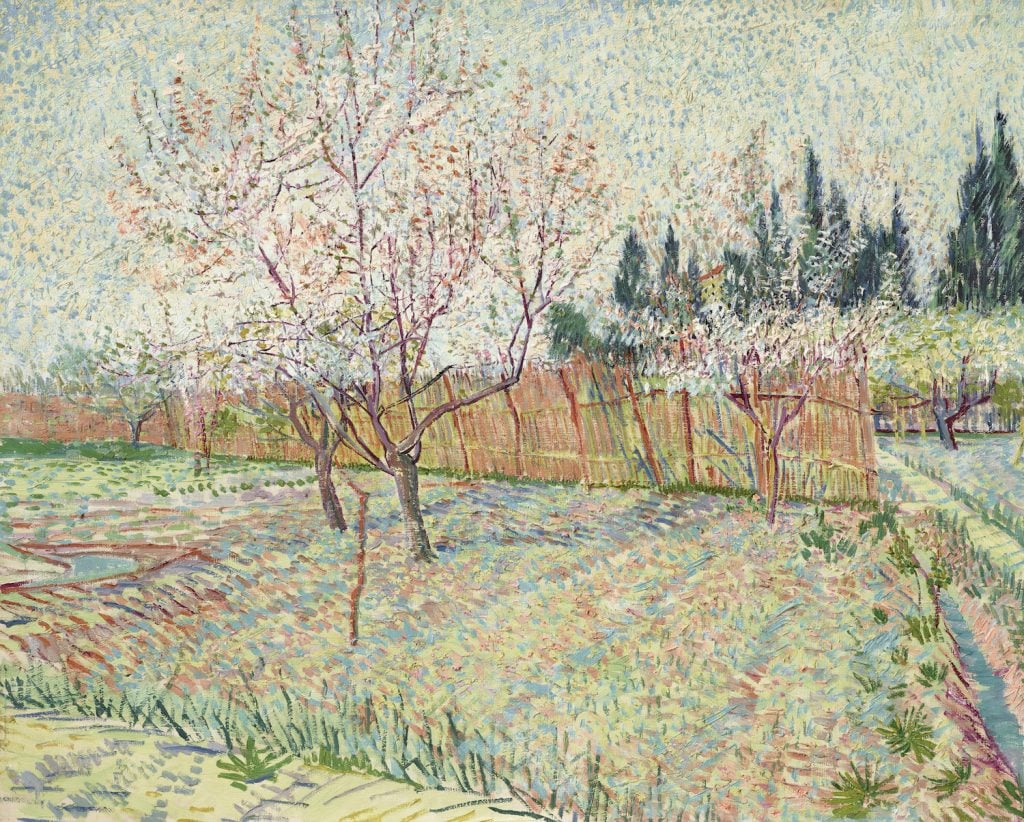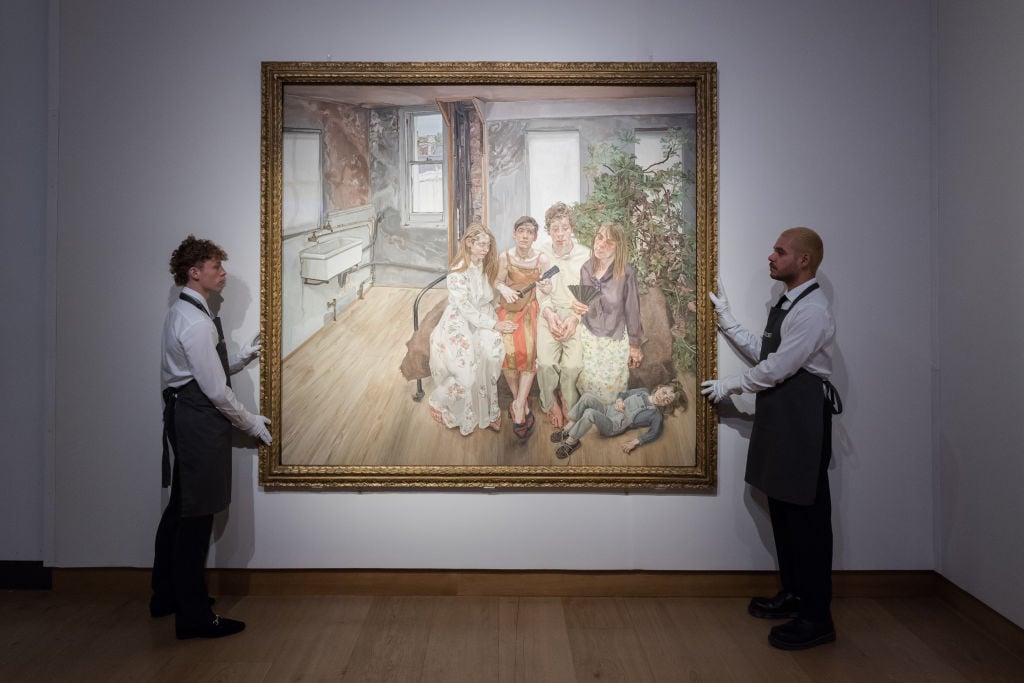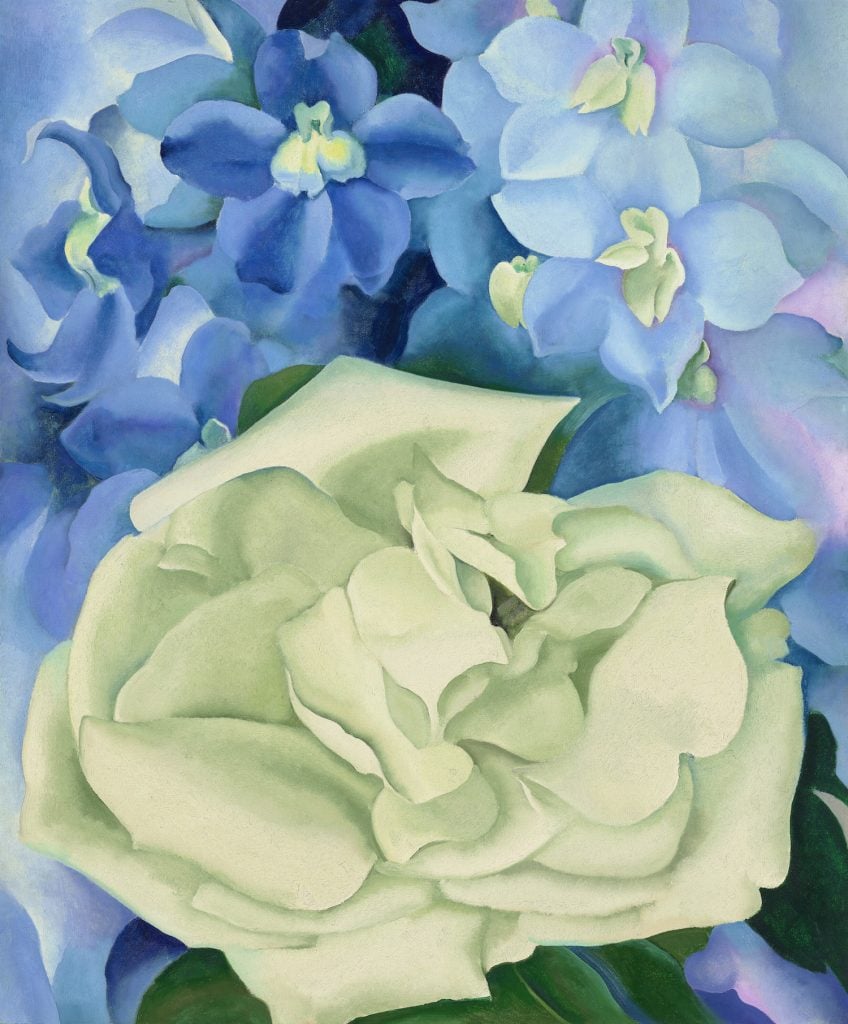Auctions
Paul Allen’s Masterpiece-Filled Collection Sells for $1.5 Billion at Christie’s, the Biggest Sale in Art-Market History
Never before has the art market absorbed so many eight- and nine-figure works in a single night.

Never before has the art market absorbed so many eight- and nine-figure works in a single night.

Katya Kazakina

Masterpieces by Van Gogh, Cézanne, and Seurat soared in New York on November 9, shrugging off geopolitical turmoil, rising inflation, and fears of a recession. In an unprecedented evening, “Visionary: Paul G. Allen Collection Part I” at Christie’s achieved $1.5 billion, the highest total ever recorded in a single auction.
The result smashed the previous single-evening high of $852.9 million at Christie’s at the peak of the market in 2014. It also handily surpassed the $922 million trove assembled by Harry and Linda Macklowe, making Allen’s the most valuable single-owner collection ever sold. And it’s not over yet: The second part of the collection, estimated at $58 million to $87 million, will be offered on November 10.
All the proceeds will go to yet unspecified charities.
Heading into the evening, the mood was buzzing and expectations were sky high. Comedian Steve Martin, megadealer Larry Gagosian, former auction rainmaker Amy Cappellazzo, and others packed into the salesroom. There’s never been an auction with so many eight- and nine-figure lots. Of the 60 works on offer (one, a Magritte, was withdrawn ahead of the sale), five sold for more than $100 million each. An eye-popping 15 more sold for over $20 million each. (Final prices include auction-house fees; presale estimates do not.) The average price of a work in the sale was $25 million, according to Christie’s.
“It’s incredible, the quality of this work,” said New York art dealer Christophe van de Weghe. “For people who are putting collections together, it’s an incredible opportunity. When are you going to find another Cézanne La montagne Sainte-Victoire? Or the Seurat? Or Gauguin’s Tahitian period? How about the Van Gogh?”
All told, the evening sale set 20 artist records, including for such big names as Van Gogh and Jasper Johns. Bidders from 19 countries participated, and American buyers took 50 percent of the lots home. Asia represented just 12 percent of buyers, according to Christie’s.

Georges Seurat, Les Poseuses, Ensemble (Petite version) (1888). Image courtesy Christie’s.
The top lot was Georges Seurat’s small canvas Les Poseuses, Ensemble (Petite version) (1888), which sold for $149.2 million, surpassing its $100 million estimate. The buyer was a client of Xin Li-Cohen, deputy chairman of Christie’s Asia. The Pointillist painting is considered the most significant Seurat in private hands. It depicts three nude figures in the artist’s studio where his famous work, A Sunday on La Grande Jatte, leans against the wall. The picture is small—only 15.5 inches tall and 20 inches wide—but packs a punch. “Every square inch of this painting is a masterpiece,” said Turkish collector Kemal Has Cingillioglu.
A cofounder of Microsoft with Bill Gates, Allen began to collect seriously in 1992, when the art market was on its knees. One of his first acquisitions at auction was Monet’s Le Bassin Aux Nympheas, which is among several significant works that are not offered at Christie’s.
He later bought works from David Geffen, a friend and fellow billionaire collector, who introduced him to Lucy Mitchell-Innes and David Nash. At the time, they were heading Sotheby’s postwar and Impressionist art divisions. For the next nine years, the power couple procured multiple trophies for Allen, many of which figured in the Christie’s auction. In 1998, Allen hired Pablo Schugurensky as director of the collection and ultimately grew the operation into a hyper-professional 14-person team tasked with procuring, cataloguing, and lending out his treasures.
“Between us, we managed to get some wonderful paintings for Paul,” Nash said, listing the Seurat as well as Van Gogh’s landscape, Verger avec cyprès (1888), which sold for $117.2 million on Wednesday.

Vincent van Gogh, Verger avec cyprès (1888). Image courtesy Christie’s.
The 150 lots at Christie’s span 500 years, from Renaissance pictures to contemporary art. Allen gravitated toward artists who spoke to his scientific mind and explored new ways of presenting space on canvas (Seurat, Johns) as well as those who depicted landscapes (Cézanne, David Hockney, Thomas Hart Benton). He also loved Venice, and collected many depictions of the Italian city, including those by J.M.W. Turner, Manet, and John Singer Sargent.
The collection—about which Allen was quite private during his life—fascinated the public, drawing 20,000 visitors to Christie’s Rockefeller Center headquarters in the 10 days it was on view.
Allen was not afraid to open his wallet when he saw something he wanted. One key purchase was Cézanne’s La montagne Sainte-Victoire (1888–90), which he bought for $38.5 million at Phillips, de Pury & Luxembourg in May 2001. Two decades later, the work fetched $137.8 million, although only two people competed, easily shattering the artist’s auction record of $60.5 million, set in 1999.

Large Interior, W11 (after Watteau) by Lucian Freud on October 14, 2022. Photo by Wiktor Szymanowicz/Anadolu Agency via Getty Images.
Lucian Freud’s Large Interior, W11 (after Watteau) (1981–83), sold for $86.3 million, surpassing its estimate of “in excess of $75 million.” Allen bought the six-by-six foot group portrait for $5.8 million at Sotheby’s in 1998. Other top lots included Paul Gauguin’s Maternité II (1899), which sold for $105.7 million (more than twice the $39.2 million he bought it for at Sotheby’s in 2004) and Gustav Klimt’s luminous Birch Forest, which fetched $104.6 million (more than twice the $40 million Allen paid for it in 2006).
“Extraordinary artworks get extraordinary prices,” Schugurensky said, beaming as he exited the auction room. “For my part, it’s a recognition of whatever I could do to help Paul Allen build this collection.”
Those works all had lofty expectations going in—but there were a few unexpected fireworks. Andrew Wyeth’s Day Dream (1980), a gauzy portrait of a woman beneath a canopy, sold for $23.3 million, more than seven times its $3 million high estimate. A floral Georgia O’Keeffe, White Rose with Larkspur No. I (1927), estimated conservatively at $6 million to $8 million, shot up to $26.7 million. That work was scooped up by a buyer on a shopping spree: a blonde woman in the room, identified by the auction attendees as Deb Robinson of Art Market Advisors, who bought it along with four other lots (a Calder, a Hockney, a Louise Bourgeois, and Johns’s False Start) for a total of $130.2 million.
Christie’s guaranteed the collection to Allen’s estate, meaning that it offered the seller a set amount of money for the trove regardless of how the market responded. In the run-up to the sale, it found third-party backers for 33 lots, effectively pre-selling them. The total low estimate of these lots was $997 million, according to Artnet calculations. In other words, Christie’s had sold almost $1 billion worth of art before the first hammer came down.

Georgia O’Keeffe, White Rose with Larkspur No. 1 (1927). Image courtesy Christie’s.
“At first Christie’s was taking a risk,” Van de Weghe said. “But there was a lot of demand, a lot of fighting to be part of the pre-selling of those pieces.”
Asked about how the art market was able to defy the economic headwinds and election-related uncertainty, Christie’s CEO Guillaume Cerutti listed several factors: rarity, quality, provenance, and the charitable nature of the sale. “When everything aligns,” he told Artnet News, “we know the demand is very strong.”